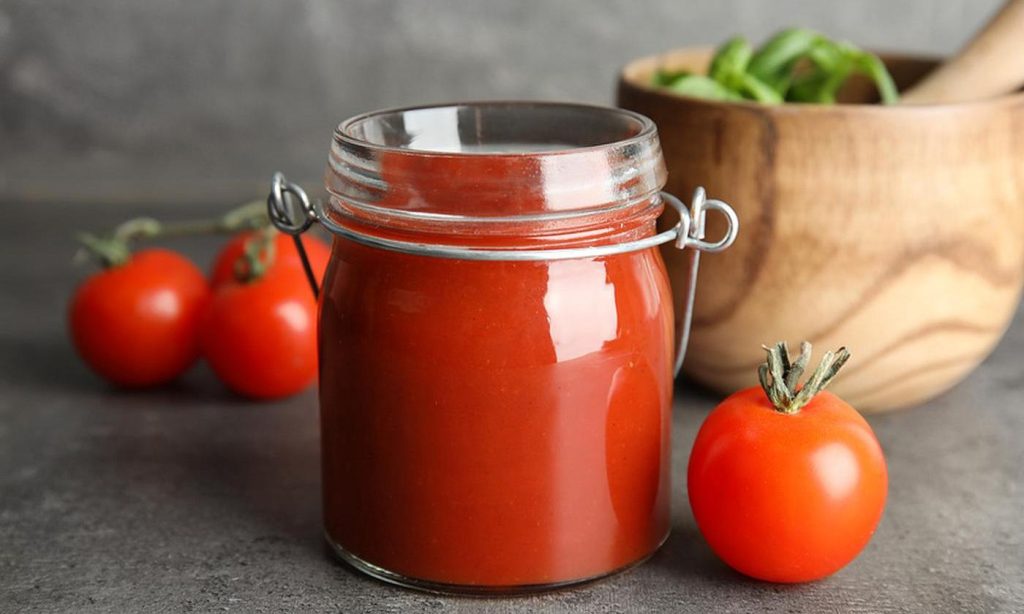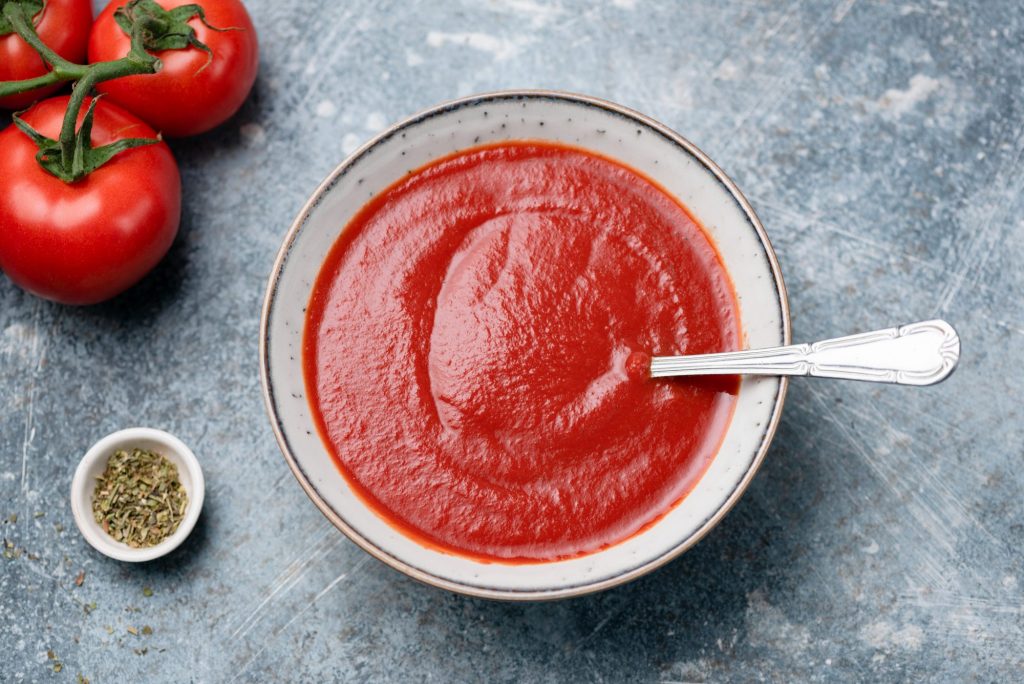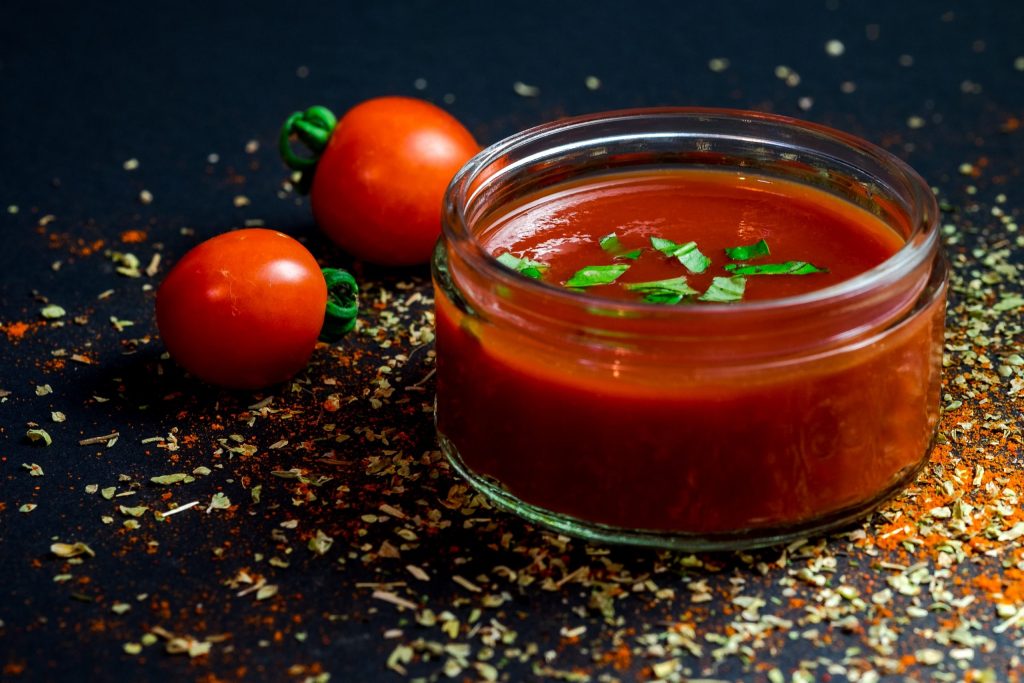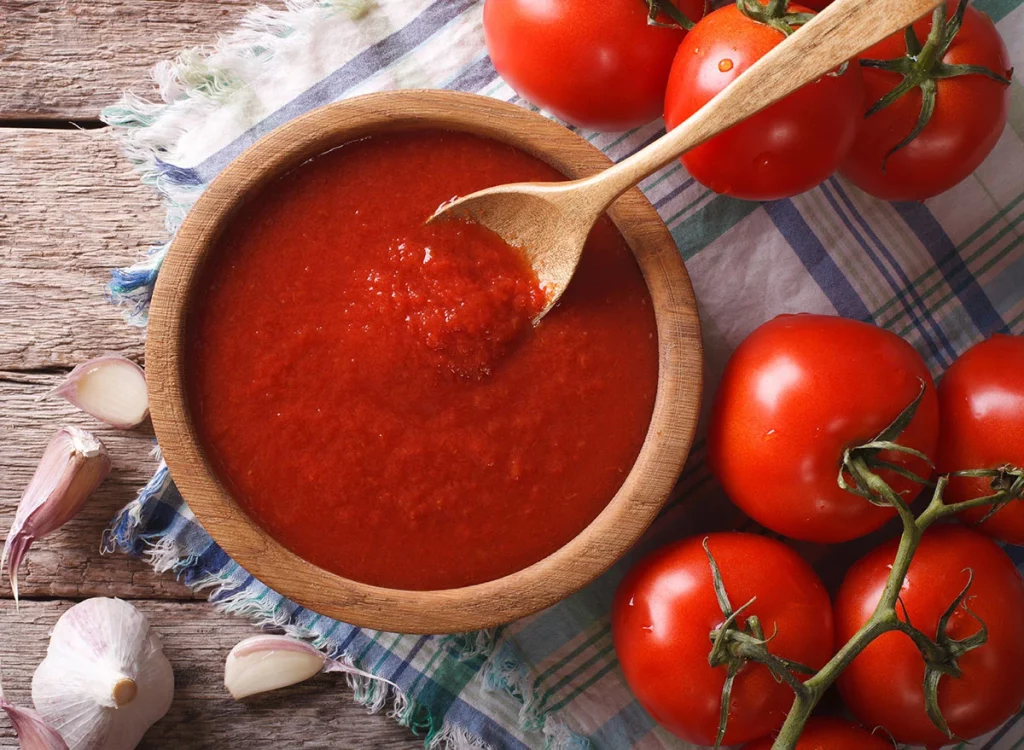Because tomato paste is a product that is used on a regular basis in almost every home, it is important to take into consideration the nutritional value of tomato paste when formulating a healthy diet, regardless of whether the diet in question is intended to aid in weight loss, is a ketogenic diet, is vegetarian or vegan, or something else entirely. If you are trying to lose weight, you should count the calories, fat grams, and other nutritional components of the tomato paste before using it. This is especially important if you are on a restricted diet. Because tomato paste is a tomato-based product and consists essentially of tomatoes that have been boiled down and stripped of their water content, the nutritional values are the same. The only difference is that the quantity of nutrition in tomato paste will be higher than the quantity of tomatoes that would be equivalent to that amount of tomato paste.
Lycopene, which is found in significant quantities in tomato paste, is a compound that is thought to have anti-cancer effects. Additionally, tomato paste contains trace amounts of both potassium and sodium nitrate. Additionally, there are a lot of fibers in tomato paste.

Tomato paste nutritional value per 100g
Every 100 grams of tomato paste contains 82 kilo calories, 0.47 grams of fat(0.1 grams of saturated fat, 0.067 grams of monounsaturated fat, 0.16 grams of polyunsaturated fat), 18.91 grams of carbohydrates, 10.41 grams of sugar, 4.5 grams of fiber, 4.32 grams of protein,0.24 grams of salt, and 1014 milligrams of potassium.
Lycopene, which is found in high concentrations in tomato paste and is thought to have anti-cancer effects, Tomato paste also contains some potassium and sodium nitrate. The fiber content in tomato paste is also high.
Vitamin C is primarily recognized for its role as an antioxidant; however, it also plays a role in the production of neurotransmitters as well as collagen, which helps to strengthen your skin and ligaments. Because of its antioxidant properties, it helps protect your body from damage caused by free radicals throughout your whole body, including giving antioxidant protection to the proteins and lipids found in your brain. The presence of vitamin C in your skin helps to reduce the damage that might be caused by exposure to the sun. The recommended daily intake of vitamin C for men is 90 milligrams, while the recommended daily intake for women is 75 milligrams. The recommended daily amount for women who are pregnant is increased to 80 milligrams. Everyone who smokes needs an additional 35 mg on a daily basis. The amount of vitamin C included in one tablespoon of tomato paste is 3.5 milligrams.

Del monte tomato paste nutrition facts
Del Monte Foods, Inc., sometimes known simply as Del Monte Foods, is a food production and distribution company based in the United States of America. Its corporate offices can be found in Walnut Creek, California. One of the largest manufacturers, distributors, and marketers of branded processed food for the retail market in the United States, Del Monte Foods has annual revenues that exceed $1.8 billion. This makes the company one of the largest in the nation. The firms produce a wide variety of products under a number of different brand names, including Del Monte, S&W, Contadina, College Inn, Fruit Burst, Fruit Naturals, Orchard Select, and SunFresh. Greg Longstreet is now serving as Del Monte Foods’ Chief Executive Officer in the role he was created for. In terms of market share, several Del Monte products come in either top or second place. Another product that the company manufactures distributes, and promotes is food sold under its own private label. Every 2 tablespoons of Del monte tomato paste contains 30 kilo calories, 20 milligrams of sodium, 310 milligrams of potassium, 6 grams of carbohydrates(2 grams of dietary fiber and 4 grams of sugar), 1grams of protein, 10 percent vitamin A, 30 percent vitamin C, 2 percent calcium, and 2 percent iron.

Is tomato paste good for weight loss
Tomatoes provide protein, minerals, fiber, and vitamins. Tomatoes also smooth and glossy skin. Tomatoes are healthy, but they can also help you lose weight. What’s more? For those who wish to lose inches and look great without trying, tomato is the answer. Learn how this amazing fruit may help you lose weight and shine.
Calorie-free
Tomatoes are low in calories despite being rich in vitamins, minerals, protein, and fiber. Medium tomato has 16 calories. Two tomatoes will make you full and reduce your calorie consumption, helping you lose weight.
Fiber-rich
Soluble and insoluble fiber aid weight loss. Rich in both, tomatoes are a terrific weight-loss fruit. In the big intestine, tomato’s soluble fiber produces a gel that feeds healthy gut flora. This boosts satiety. Insoluble fiber in tomato reduces fat absorption and weight gain.

Metabolism-booster
Tomatoes boost metabolism, according to experts. In a research on middle-aged women, tomatoes increased REE. This suggests resting calories increased. No other technique burns more calories easily.
Low-GI
Comparatively, tomatoes have a low glycemic index. Tomatoes have 38 GI. Tomatoes raise blood sugar slowly. More time is helpful since it helps regulate blood sugar.
Antioxidant-packed
Lycopene is found in tomatoes. Antioxidants prevent cell damage and premature aging. They reduce oxidative stress, which aids weight loss.

Eat tomatoes to lose weight?
Never! Tomatoes alone won’t help you lose weight. Actually, no food can. Diet and exercise help people lose weight. Exercise and eating go together. Losing weight is 70% food and 30% activity. Important: burn more calories than you consume. Without these two, weight loss is impossible. Tomatoes and other nutritious fruits and vegetables can’t substitute a weight-loss program.
1 tbsp tomato paste calories
Tomato paste has 15 calories for every 16 grams that are consumed. This item falls under the category of having a Low calorie density because it has 91 calories for every 100 grams. If a meal has a low calorie density, it usually means that you can consume a greater quantity of it without consuming more calories. These foods are typically ideal options for dieting because of this.
The carbohydrate content of tomato paste is high, while the protein content is moderate, and the fat content is extremely low. You may get a more in-depth breakdown by looking at the graph of the macronutrients that are provided below. It has a High Volume of Fibers, but it also contains a High Volume of Sugars. It is recommended that you limit your daily intake of sugar to fewer than 25 grams.
If you are following a ketogenic or ketosis diet, you should not take this food since it contains 15 grams of “net carbs” per 100 grams.

Is tomato paste healthy reddit
Tomato paste is unlikely to cause weight gain because a 1-tbsp. portion only has 13 calories and no fat. It also offers 244 international units of vitamin A, which is crucial for the growth of the fetus as well as the health of the eyes and reproductive system. Tomato paste nevertheless offers 3.5 mg of vitamin C, although not being as abundant as fresh tomatoes in this antioxidant that boosts immunity and aids in tissue regeneration. A number of the B vitamins and vitamin K are also found in it. To support healthy red blood cell activity, tomato paste contains.5 mg of iron per tablespoon. Each tablespoon of tomato paste contains 162 mg of potassium, which can assist your body maintain healthy mineral and fluid levels.
Antioxidants
Some of the antioxidants in tomatoes are made more accessible during the production of tomato paste. Antioxidants are substances that scavenge the free radicals that cause illness and aging in the body. According to a research that appeared in the “Journal of Agriculture and Food Chemistry” in May 2002, heating tomatoes during production increased their overall antioxidant activity, particularly that of lycopene. Lycopene-rich tomato products are associated with lower prostate cancer risk when consumed in large quantities.
Sunburn
The use of tomato paste could help shield you against the flushing brought on by UV light exposure. In May 2001, a research in the “Journal of Nutrition” shown that 40 g of tomato paste combined with 10 g of olive oil over the course of 10 weeks decreased erythema, or sunburn, by 40%. The cause of this favorable outcome, according to the researchers, is the lycopene in the paste. A research published in the “British Journal of Dermatology” in January 2011 discovered that taking 55 g of tomato paste over the course of 12 weeks offered defense against sun-related skin damage.

Eating tomato paste raw
Squeezing a dab of pre-made tomato paste directly into a simmering soup (or sauce—or anyplace else, for that matter) is something you should very much never do. And the reason for this is because tomato paste has an unfavorable tart, mineral flavor when it is first removed from the tube (or can).
The key to utilizing tomato paste is to thoroughly caramelize it before adding any liquid to the saucepan. This does not imply that you must always use a second cooking pot while making tomato sauce. To prepare, just sauté some onions, carrots, garlic, or other aromatics until they are softened and about as black as you would like them to be (the paste will continue to cook them after this). Spices can be added and quickly sautéed to release their essential oils. Cook the tomato paste, stirring occasionally, until it turns brilliant crimson and then brick red. Use wine or another liquid to deglaze the pan.
The natural sugars in tomato paste are concentrated when you caramelize it, explains Senior Food Editor Anna Stockwell. Other complex tastes in the paste will also be enhanced by the browning procedure since tomato paste contains a lot of glutamates, which inherently heighten the umami, or savory, quality of food.

Anna cautions that she believes many people just warm tomato paste all the way through while they are actually merely caramelizing it. Tomato paste often has a brilliant, flaming red color immediately out of the tube or container. It should be cooked until it is “noticeably less vivid,” according to Anna.
A clever tip for enhancing the flavor and satiety of any savory dish—not just pasta sauce—is to cook some tomato paste until it gets that deep color. Use it to add rich flavor to a bland store-bought stock or to any stew, soup, or chili that contains tomatoes.
In reality, you can use this technique in a variety of meals when tomatoes aren’t the main ingredient. For example, I recently caramelized tomato paste when creating an otherwise tomato-free chicken stew to add a hint of sweetness and savory flavor. The stew became very flavorful rather than excessively tomatoey. And sweetly eerie. And it was just as delectable as I had imagined.









Your comment submitted.